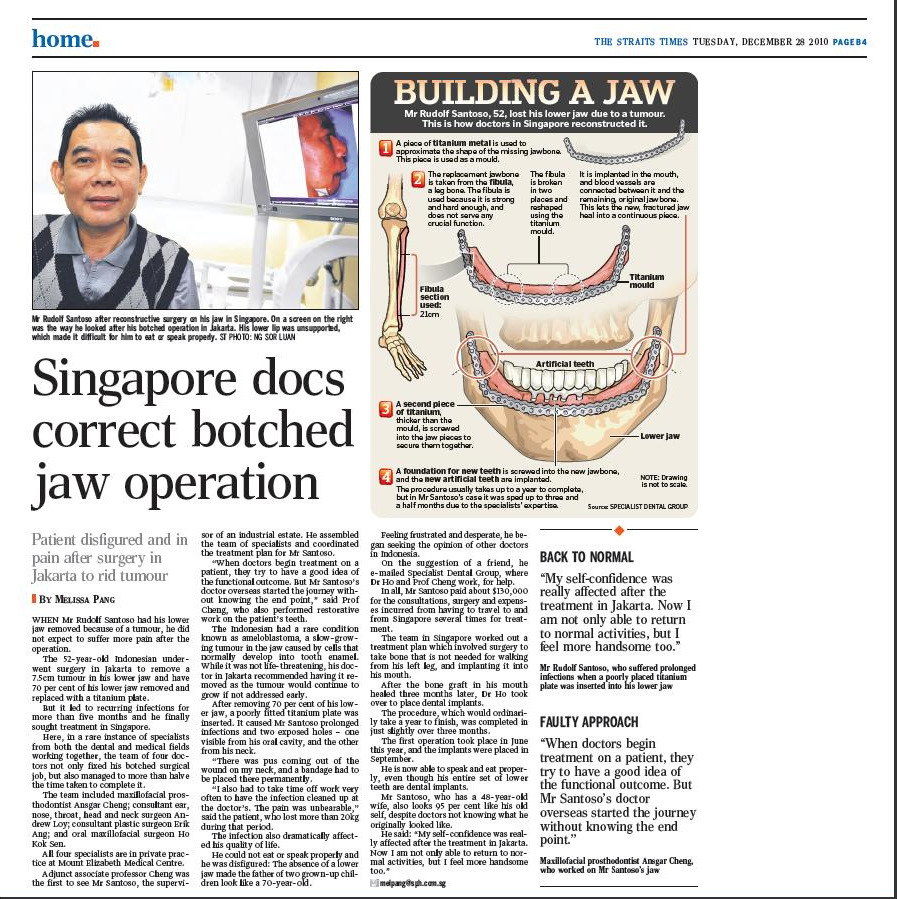Dental crowns
Book a 30-min dental crown consultation with dentists in Singapore to get started on transforming your smile.
Or call: +65 6734 9393

Natural dental crowns in Singapore
Your smile can be your crowning glory with the help of a dental crown. A dental crown is a restoration that completely covers or caps teeth, restoring them to their natural size, shape and colour. Completely natural-looking, crowns look almost like real teeth.
A crown can help to strengthen teeth that are weakened by, for example, large cavities and teeth that were treated with root canal treatment. They may also be used to cover teeth that are discoloured or badly shaped. As part of the treatment for replacing missing teeth, dental crowns can also be used to attach bridges and to cover dental implants (implant crown).
There are different types of dental crowns, including zirconium, porcelain, porcelain-fused to metal and gold alloys. Consult our dental specialists in Prosthodontics (cosmetic dentistry & missing teeth replacement) in Singapore to find out if a dental crown is a suitable treatment option for you.

What are dental crowns?
A crown is a restoration that completely covers or caps teeth, restoring them to their natural size, shape and colour. Completely natural-looking, crowns look almost like real teeth.
A crown can help to strengthen teeth that are weakened by, for example, large cavities and teeth that were treated with root canal treatment. They may also be used to cover teeth that are discoloured or badly shaped. As part of the treatment for replacing missing teeth, dental crowns can also be used to attach bridges and to cover dental implants (implant crowns).
The crown protects the tooth from further damage and can be made virtually indistinguishable from your natural teeth. It also restores your smile and makes chewing and articulating easier.
With a proper home care oral regime and regular professional maintenance every 6 months, your crowned teeth can last for decades.
When receiving a crowning procedure, there are several types of dental crowns to choose from. These include:
- Zirconium crowns
- Porcelain crowns
- Gold crowns
- All-resin crowns
The ideal option varies between individuals, and you can speak to our dental specialists in Singapore to find out which type of crown is suitable for you.
What is involved in a dental crown procedure?
Not only does cosmetic dentistry help you regain your confidence by achieving your desired smile, but some of them have restorative properties that will benefit your quality of life as well. Cosmetic benefits will follow the functional aspects naturally, and your beautiful teeth will reflect your inner well-being.
Initial Consultation
Your dental specialist will find out the details of your medical and dental history, go through a consultation and examination and take a digital X-ray of your teeth to enable a thorough and detailed diagnosis. The dental specialist will examine your teeth to determine if you also need to have root canal treatment on the tooth. Root canal treatment is usually recommended where there is extensive decay or risk of infection or injury to the tooth’s pulp. Although the two are often prescribed together, root canal treatment may not always be necessary.
A crown may require a foundation build-up called a core. Thereafter, approximately 1 mm of weakened tooth structure will be removed to make space for the crown. A dental crown procedure in Singapore usually requires two appointments. At the first appointment, an impression of the tooth will then be made and sent to the dental laboratory. The dental specialist will also remove any decay and shape your tooth so the crown will fit correctly.
A temporary crown may be made until the definitive crown is ready. This is usually made of resin and is not meant to last more than one month. At your second appointment, your dental specialist will put the temporary crown in place and remove any excess gum tissue around your tooth. They will then clean and polish your tooth and check to make sure the temporary crown is fitting well.
This process can be completed in one visit.
Once the crown is ready, the dentist will remove the temporary crown and try on the definitive crown. Any adjustments (if necessary) will be made to ensure a good fit and colour. The dental crown will be cemented into place.
This process can be completed in one visit to your dentist in Singapore, and you will be able to resume normal daily activities within an hour after you leave the clinic.
Crowned teeth are no stronger or weaker than your natural teeth and are not meant to be permanent. However, with a proper home care oral regime and regular professional maintenance every 6 months, crowned teeth will last for decades.
In terms of professional maintenance, research has shown that the success rate for crowns is about 85% to 90% over 10 years. This means that out of 100 crowns done, about 10 to 15 need to be repaired or done again within this time.
Meanwhile, the precautions to take note of at home include:
- Avoid sticky, chewy foods (for example, chewing gum, toffee, etc.), which could dislodge the bridges.
- Minimise the use of the side of your mouth with the temporary teeth. Try to chew more on the other side of your mouth.
Avoid chewing hard foods (such as nuts, raw vegetables, apples, etc.), which could dislodge and/or break the temporary teeth.
Dental crown fees in Singapore
The fees for a dental crown starts from S$2,800 per tooth onwards. However, the actual fees for your procedure vary depending on the materials used, your specific needs and your chosen dental clinic.
At Specialist Dental Group, refer to the table for dental crown procedures.
Can Medisave be used for dental crowning in Singapore?
Wondering if Medisave can be used for this procedure?
Medisave does not apply to dental crowns as this is considered a non-surgical procedure.
If you are also wondering if dental crowning procedures done in Singapore can be covered with insurance, that will depend on the nature of your policy. For most insurance companies in Singapore (e.g. AIA, Prudential), dental crowning falls under the general exclusion clause. Therefore, you are recommended to contact your insurer to find out if the treatment can be covered under your policy.
Meet our dental crown team
Our custom dental crowns protect damaged teeth while enhancing strength and appearance. Book a 30-minute consultation to find out how a dental crown can restore your smile.














